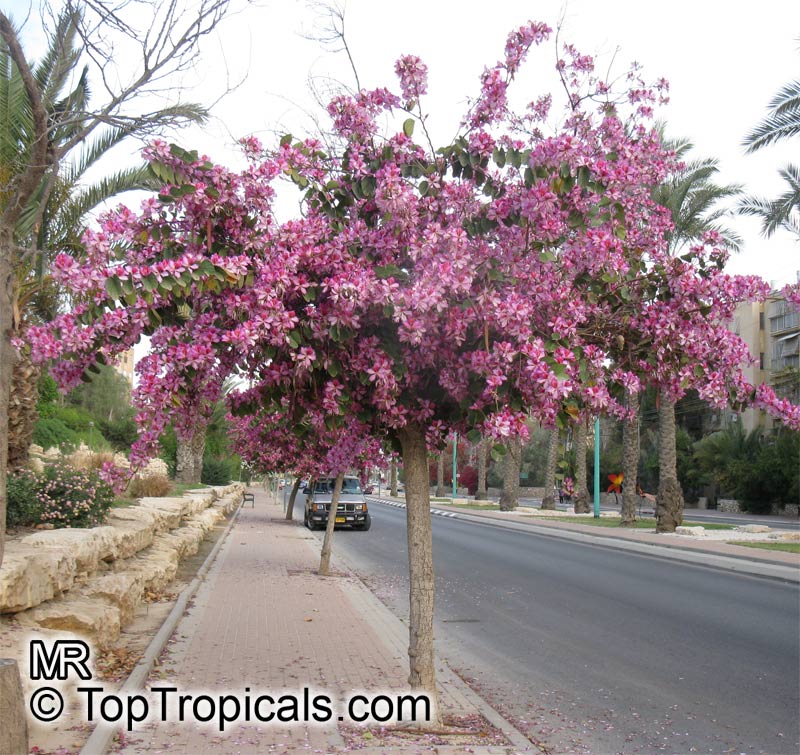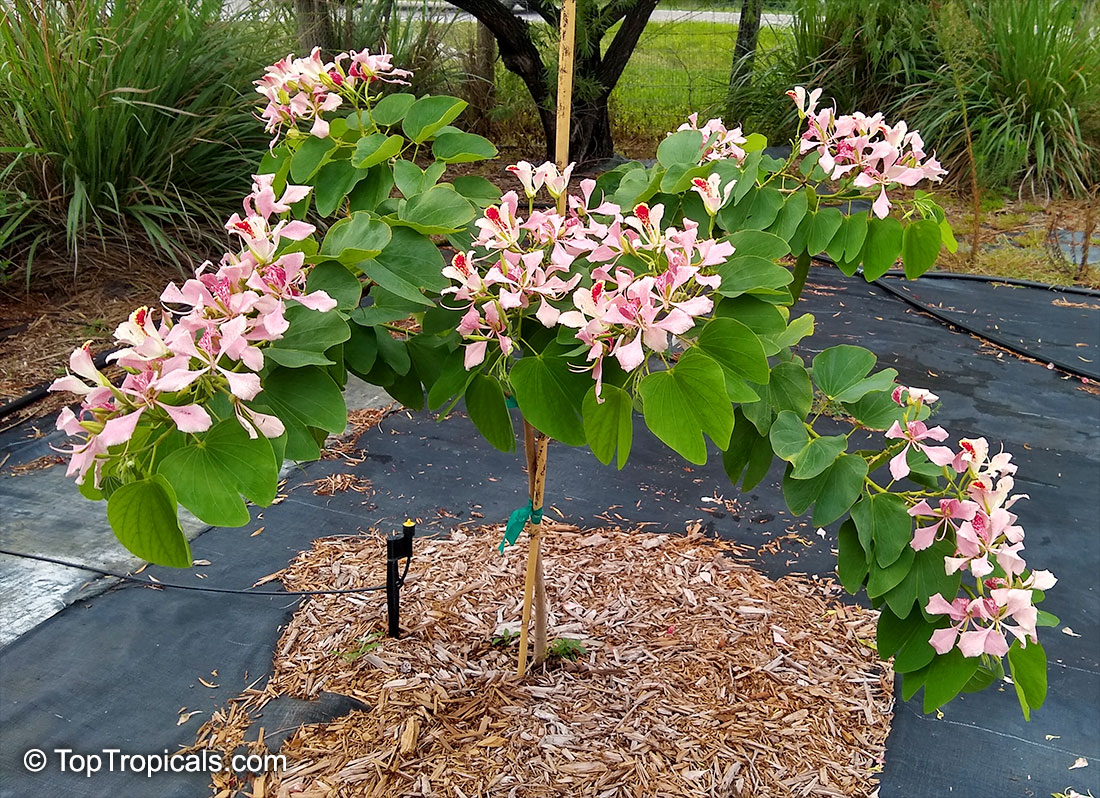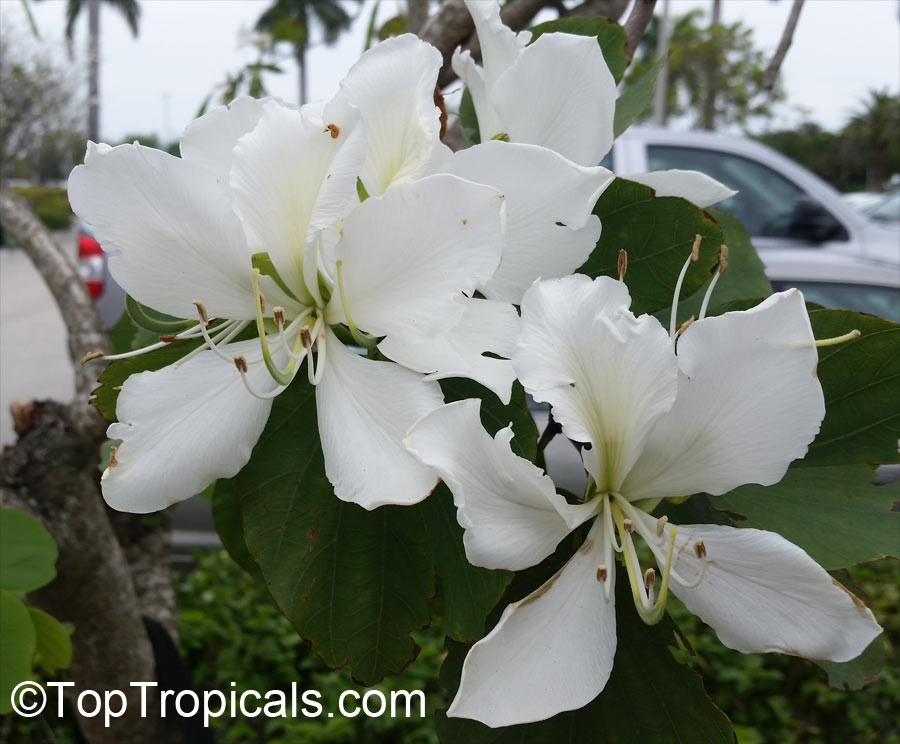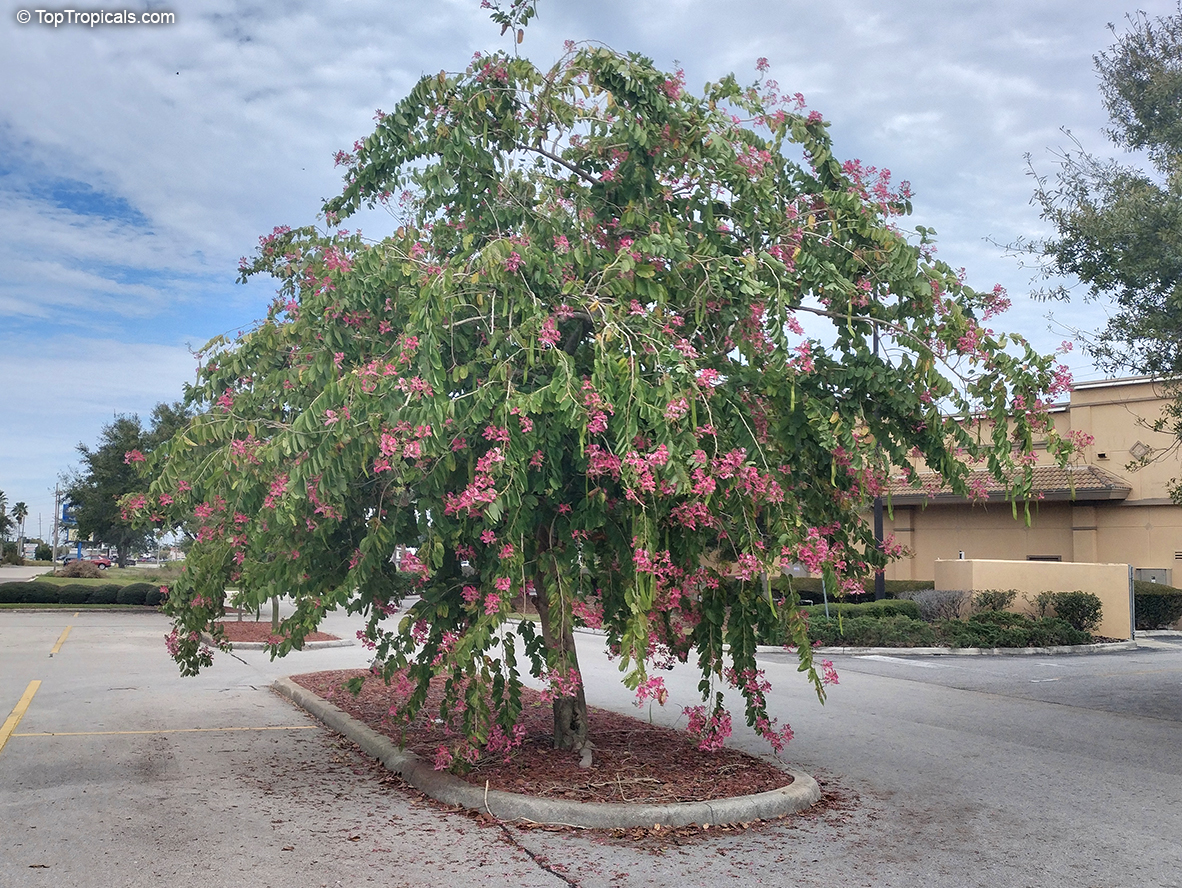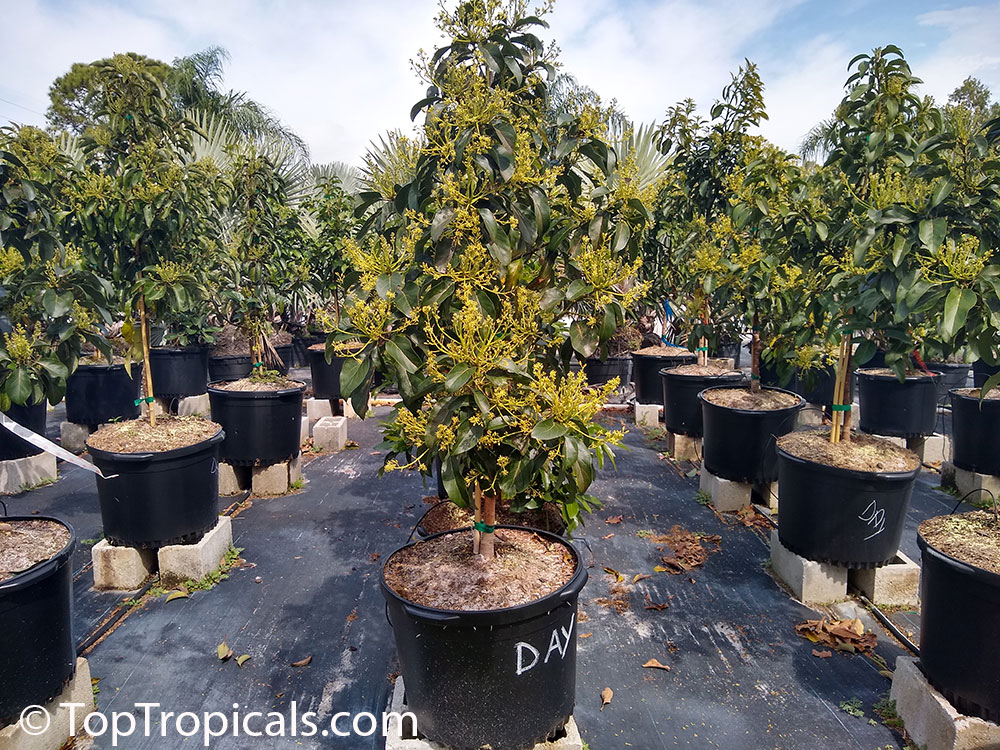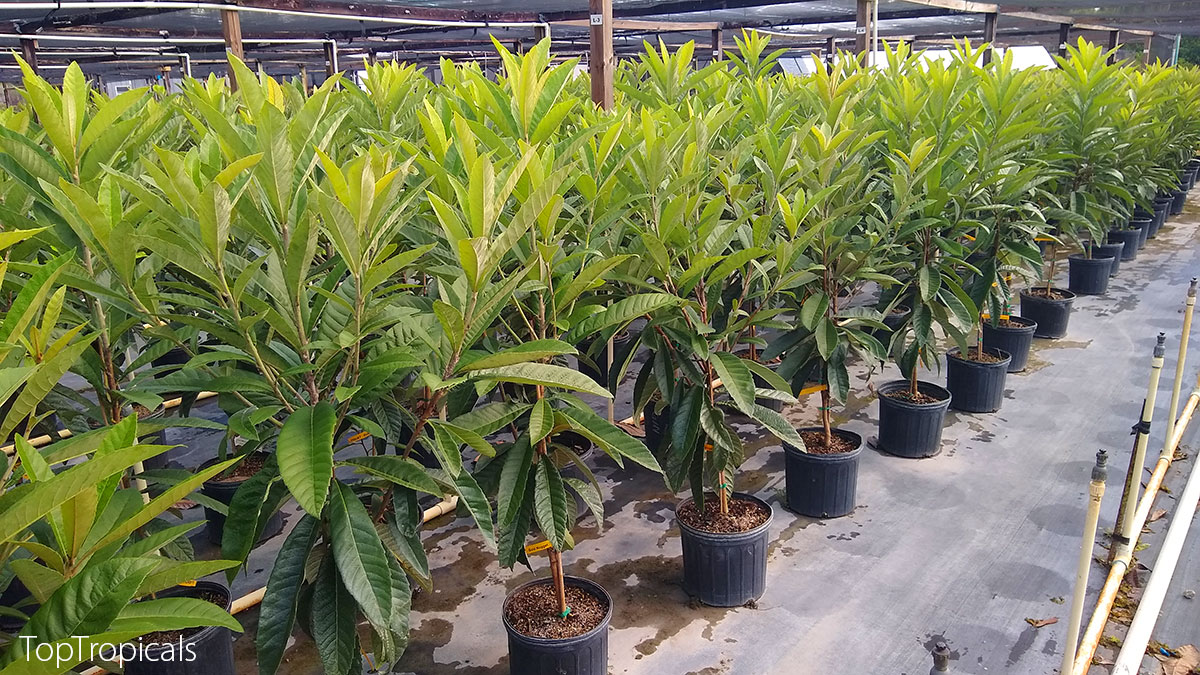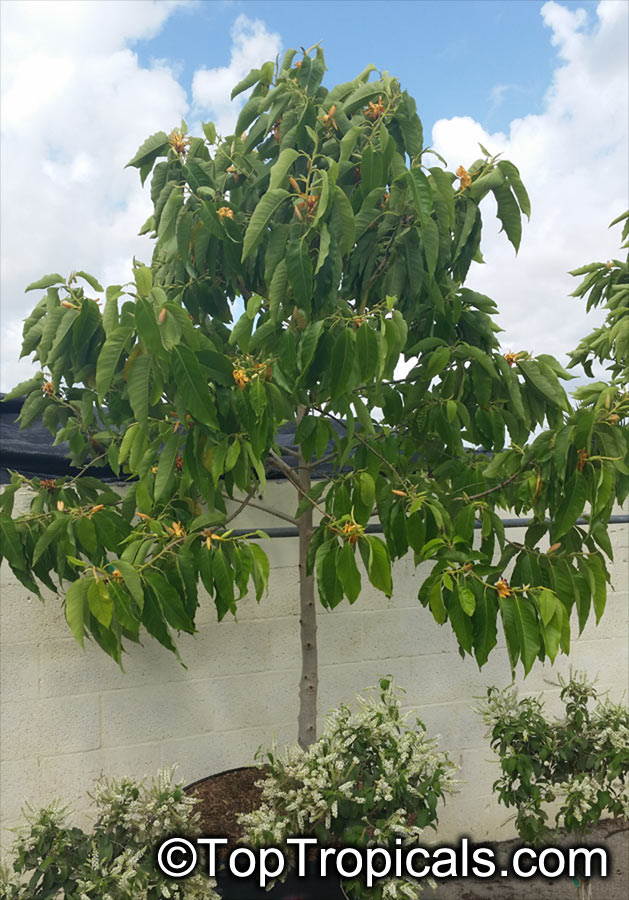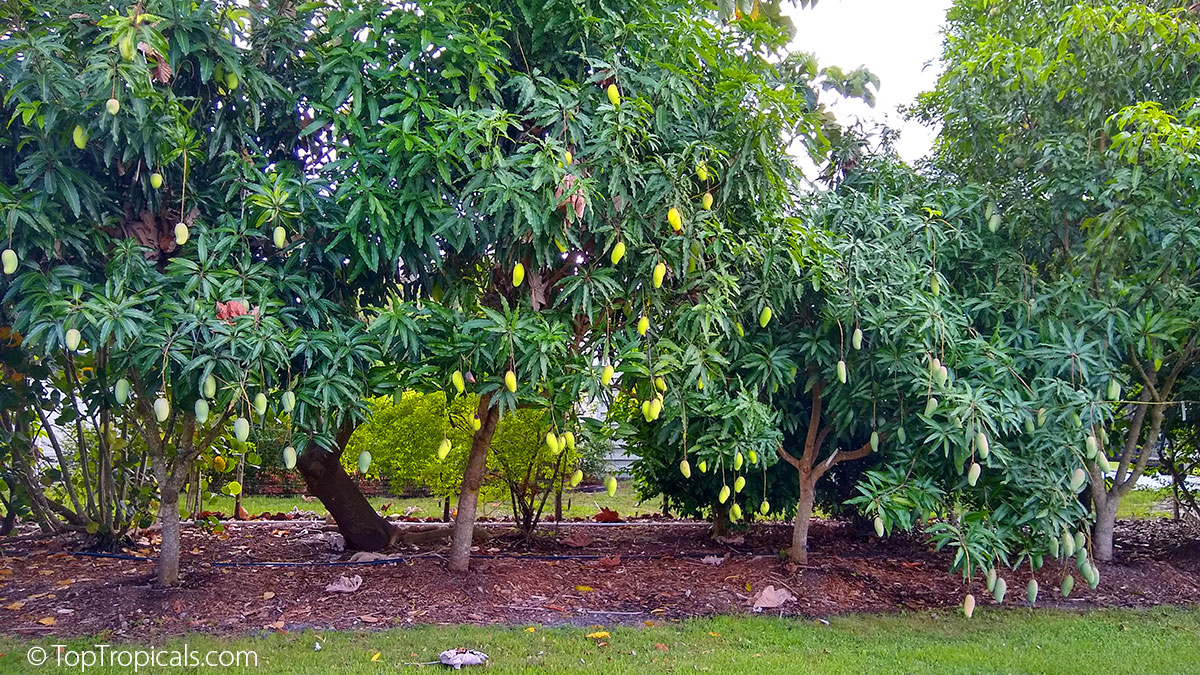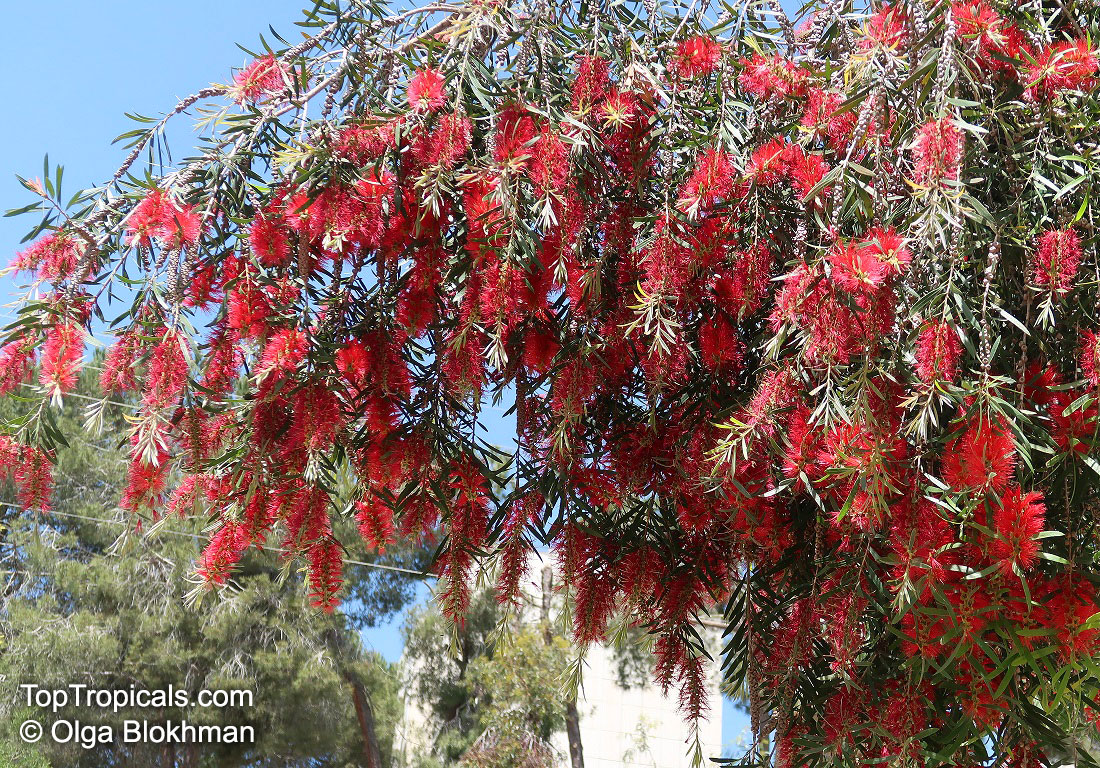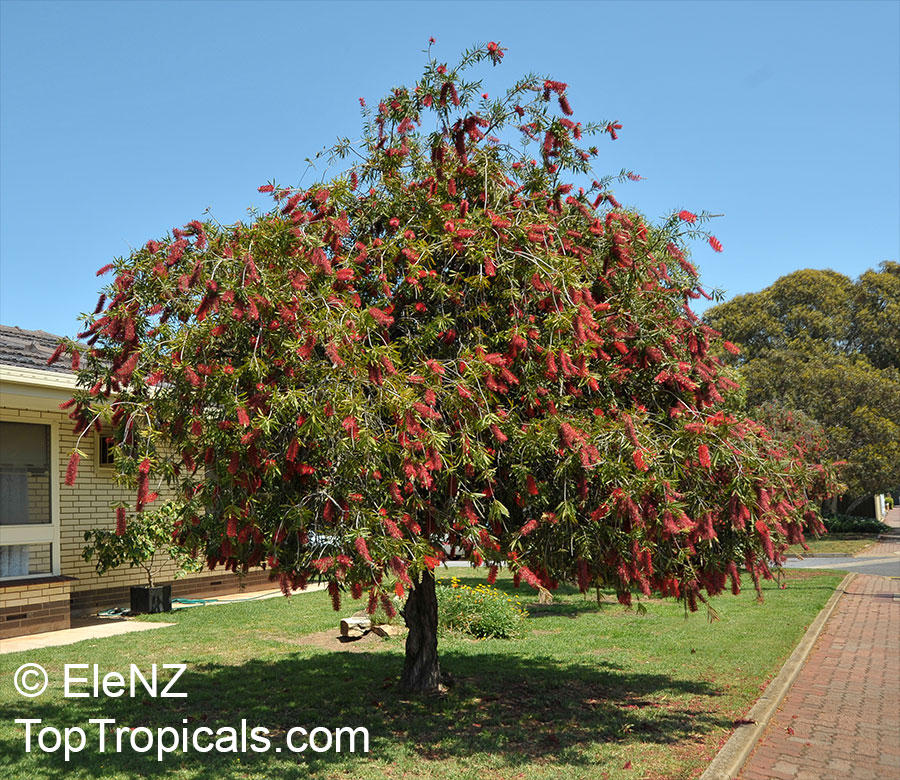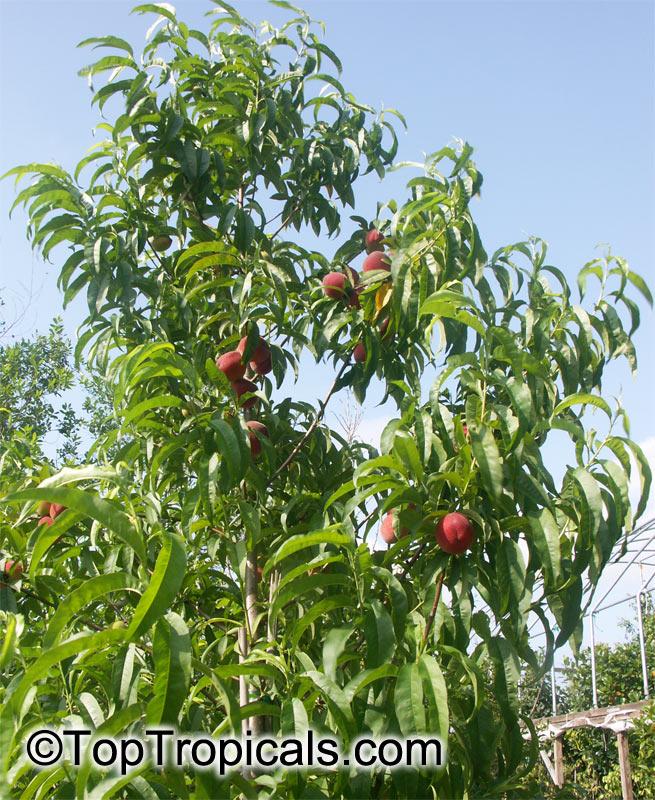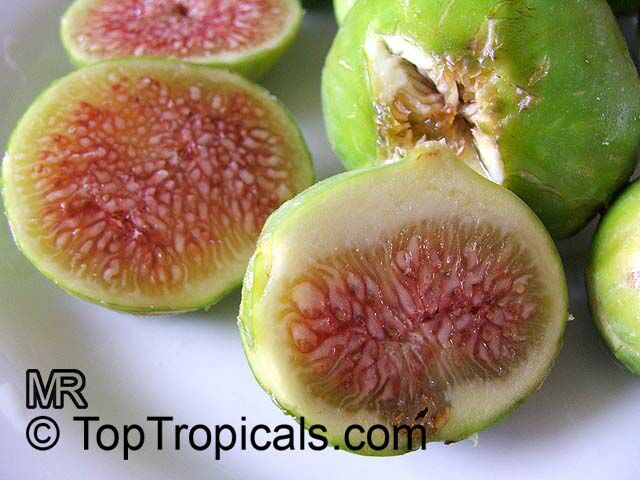Garden Blog - Top Tropicals
Date:
Bauhinias: trees with Orchid Flowers
and Butterfly Wings...
Photo above: Bauhinia variegata - Purple Orchid Tree, one of the most spectacular varieties.
Q: We just moved to Florida and I see these beautiful trees with large purple flowers. I was told these are Orchid trees, do you have them?
A: Bauhinias, commonly known as Orchid trees, are renowned for their captivating flowers and unique foliage. These trees typically grow to a moderate height of 15-25 feet with a spread of 10-15 feet, showcasing a rounded to vase-like shape. Thriving in hardiness zones 9-11, they exhibit resilience to heat and can withstand mild frost. There are over 300 species of Bauhinia, which are distributed in tropical and subtropical areas. These species vary in characteristics such as size, foliage, and flower color, contributing to the diversity and appeal of this genus. You can find them as trees, shrubs, and even vines.
Bauhinias are evergreen (in tropics) to semi-deciduous (in cooler climates), offering year-round beauty with intermittent blooming cycles. The peak bloom time varies depending on the species and location, often occurring in late winter to early spring, bedecking the tree with striking orchid-like flowers in hues ranging from white and pink to purple and red. The flowers boast delicate petals with intricate patterns, resembling the elegance of true orchids.
One of the distinguishing features of Bauhinia leaves is their unique bi-lobed or bilobed structure, which gives them a distinct appearance. The leaves are deeply divided, typically into two lobes or halves, hence the common name "Butterfly tree" due to their resemblance to butterfly wings. This characteristic is often used as an identifying trait for Bauhinia species. The bilobed leaves add to the visual appeal of the tree, contributing to its ornamental value in addition to its beautiful flowers.
Photo above: Bauhinia monandra - Napoleons Plume, starts flowering in small size. This one is very beautiful but the most cold sensitive and should be grown in pots in areas with winter freeze. It will happily bloom in container!
Low-maintenance by nature, Bauhinias require minimal upkeep. Annual feeding with a balanced fertilizer enhances growth and flowering. Pruning is generally optional but can be done in late winter or spring, after flowering, to maintain shape or remove dead or damaged branches. These trees thrive in full sun, preferring well-drained soil. With their enchanting blooms and easy care requirements, Bauhinia orchid trees are a delightful addition to any landscape, and a colorful specimen for tropical winter gardens.
In addition, Orchid trees grow fast and provide excellent shade. They can make a shady spot in your garden in no time, giving relief from the hot sun. This is really valuable, especially in places where it gets very hot. So, not only are Orchid trees pretty to look at with their lovely flowers, but they're also great for keeping you cool!
Read more about Bauninias:
Bauihnias: Orchid trees with Butterfly flowers... and leaves
Photo above: Bauhinia x alba (candida) - White orchid tree, the most cold hardy variety that can take light freeze once established.
Photo above: Bauhinia purpurea - Purple Orchid Tree, one of the most popular and easy trees in Southern landscapes.
Date:
When Bigger means Better
Everybody loves shopping online nowadays, and plants are no exception. Buying plants by mail order is not uncommon anymore; it only takes one click, and luckily, there are many sources - from big shopping malls like Amazon to small backyard nurseries that sell their seedlings on eBay or Facebook - all delivered to your door. But plants are alive... So when doing your online plant shopping, you must ensure that you fully enjoy your experience and are happy with a healthy plant that a) doesn't die; b) recovers quickly; and c) starts growing fast, so you can see flowers and fruit as soon as possible.
The rule of thumb for shipping plants: bigger plants undergo shipping better, experience less stress, less leaf drop, and recover quicker than plants with smaller root systems. So when it comes to buying plants online, the bigger, the better. Unfortunately, many mail-order plant sources may sell you a tiny twig that has very few chances of surviving. Shipping is very expensive today, so shipping a bigger size plant may cost more than the plant itself.
Below is a piece of advice on how to make the best plant selection for your garden...
Photo above: Loquat trees in 3 gal containers.
5 important rules on how to buy trees online
1. Find a source with bigger plants. Check reviews, ask friends
for recommendations, inquire from the company about the size of their plants
and how they pack their plants for shipping.
TopTropicals offers well-established, strong plants with developed root
system, in container sizes 1, 3, 7, 15 gallon, directly from a tropical
Florida growing farm. Our unique plant-packing techniques are state of the art!
2. Price not always reflects the size and quality of the plant
TopTropicals offers many deals, discounts and sales, while still
providing the biggest and strongest plants grown in real tropical conditions.
3. Most fruit trees must be grafted to produce good fruit. Make
sure you are not purchasing a seedling when it comes to Mango, Avocado,
Peaches and some other trees with named varieties that don't come true to seed.
TopTropicals offers only grafted - Mango,
Avocado and a large number of other tropical cultivars.
4. Pick up when possible from the nursery your ordered from, or
get a delivery, instead of shipping the plants. A drive to the nursery will save you more time and money in the
future, plus you can hand-pick the biggest and healthiest specimens.
TopTropicals is open 7 days a week for your convenience. Visit our Ft Myers Garden Center or Sebring Farm to select the biggest plants.
5. Take advantage of X-Large size plant material if you live
outside the tropical zone and are trying to zone-push your tropical garden.
Bigger plants will establish faster and have more chances to survive cold winters.
Again, it will save you money in a long run (although bigger plants may be
more expensive, but their survival rate is much higher when it comes to cold
nights).
TopTropicals offers X-Large flowering and fruiting trees (7-15-25
gallons), and most of the varieties you see in our online
store can be custom-ordered in big sizes. Delivery and installation
available.
Photo above: Avocado trees in 7 gal containers.
Photo above: Magnolia champaca - Joy Perfume Tree in 25 gal container.
Date:
Shade
Tree Discount Program
How to reduce an electric bill and energy costs?
Photo above: Cassia fistula - Golden Shower Tree - one of the most popular trees. This all time favorite is fast growing and elegant.
Q: How to reduce an electric bill and energy costs?
A: This summer is expected to be hot. And the next summer... and next... Want to reduce your electric bill and energy costs? There is an excellent solution: plant a shade tree! Once fully grown, these trees will help keep your house cooler and lower your energy expenses.
Today we are offering a special discount you can use for purchasing
trees that will keep your homes cooler in Summer and gardens warmer in Winter!
Check out Fast
Growing Shade Trees, as well as other flowering trees and fruit trees and use discount below:
GETSHADE
Your savings with this code:
5% off orders $100+
15% off orders $150+
20% off orders $200+
Excluding S/H. Excluding 15 gal material. Exp. 6-12-24
Photo above: Tabebuia - spectacular winter bloomer.
Photo above: Bauhinia blakeana - Hong Kong Orchid Tree. The most beautiful of all orchid trees.
Photo above: Mango trees now. Many varieties are vigorous, large trees.
Photo above: Cattley Guava Tree is an elegant solution for small spaces. Red Button French Kiss Ginger goes well with it!
Index of TopTropicals Telegram Channel
Follow these tags to find your interests:
#Butterfly_Plants - Butterfly attracting plants.
#Container_Garden - Plants suitable for container garden and indoor culture.
#Fertilizers - All the truth about fertilizers, plant food supplements, and our recommendations for different types of plants.
#Food_Forest - Fruit trees, Spice plants, and Edibles.
Including: #Avocado, #Mango, #Papaya, #Guava, #Jackfruit, #Loquat
📖 #Fun_Facts - interesting plant facts and legends.
🌳 #Hedges_with_benefits - Practical approach to your landscape and how to properly select showy and useful plants for your yard.
♍️ #Horoscope - Plant Horoscopes and Cat Horoscopes. Did you know that cats also have their Zodiac signs?
🛠 #How_to - Q&A about growing plants, tropical garden lifehacks.
👀 #Nature_Wonders - Unusual, amusing, outrageous, bizarre plants...
🐈 #PeopleCats - our Favorite PeopleCats (and some PeopleDogs, too).
🌸 #Perfume_Plants - Fragrant plants and perfume trees.
✍️ #Quotes - Interesting quotes.
#Recipes - Exotic recipes for tropical fruit and edibles.
💊 #Remedies - Medicinal plants.
☁️ #Shade_Garden - Plants suitable for low light conditions.
🌼 #Trees - Spectacular flowering tropical trees.
🏆 #Win - Contests, Sweepstakes, and other specials.
Join and share with friends👇🏵
TopTropicals
Date:
How to grow Bottle brush trees
Q: Please recommend me a cold hardy flowering tree that doesn't need much care.
A: Growing bottle brush trees (Callistemon spp.) can be a rewarding experience, as they are known for their striking, brush-like flowers and ability to attract pollinators. Here are some detailed tips to help you successfully grow and maintain these trees.
Hardiness
Bottle brush trees are best suited for USDA hardiness zones 8-11. They thrive in warm climates and can tolerate some light frost, but severe cold can damage or kill the plant.
Planting Location
Sunlight: Bottle brush trees require full sun to thrive. Ensure they get at least 6-8 hours of direct sunlight per day.
Soil: They prefer well-draining soil. While they are relatively tolerant of poor soil conditions, a sandy or loamy
Space: Consider the mature size of the tree when planting. Some species can grow quite large, so provide enough space for them to spread without being crowded by other plants or structures.
Attracting Pollinators
Bottle brush trees are popular with pollinators. Their bright, nectar-rich flowers attract bees, butterflies, and birds, particularly hummingbirds. This makes them an excellent choice for a garden designed to support local wildlife.
Blooming and Fertilization
Bottle brush trees typically bloom in late spring to early summer. However, in mild climates, they may have sporadic blooms throughout the year.
Fertilization: While bottle brush trees do not require heavy fertilization, applying a balanced, slow-release fertilizer in spring can promote healthier growth and more abundant blooms. Be cautious not to over-fertilize, as this can lead to excessive foliage growth at the expense of flowers. During the year, use |find_name=Sunshine Boosters Megaflor(Sunshine Megaflor)| - it is safe to use with every watering, year around.
Watering
During the establishment period, keep the soil moist. Once established, they are quite drought-tolerant but will benefit from regular watering during dry spells.
Pruning
Prune after flowering to maintain shape and remove any dead or diseased branches. This also encourages bushier growth.
By following these guidelines, you can enjoy the beauty and benefits of bottle brush trees in your garden. Their vibrant flowers and attraction to pollinators make them a delightful addition to many landscapes.
Why cannon balls grow on a tree with mollusk open mouth
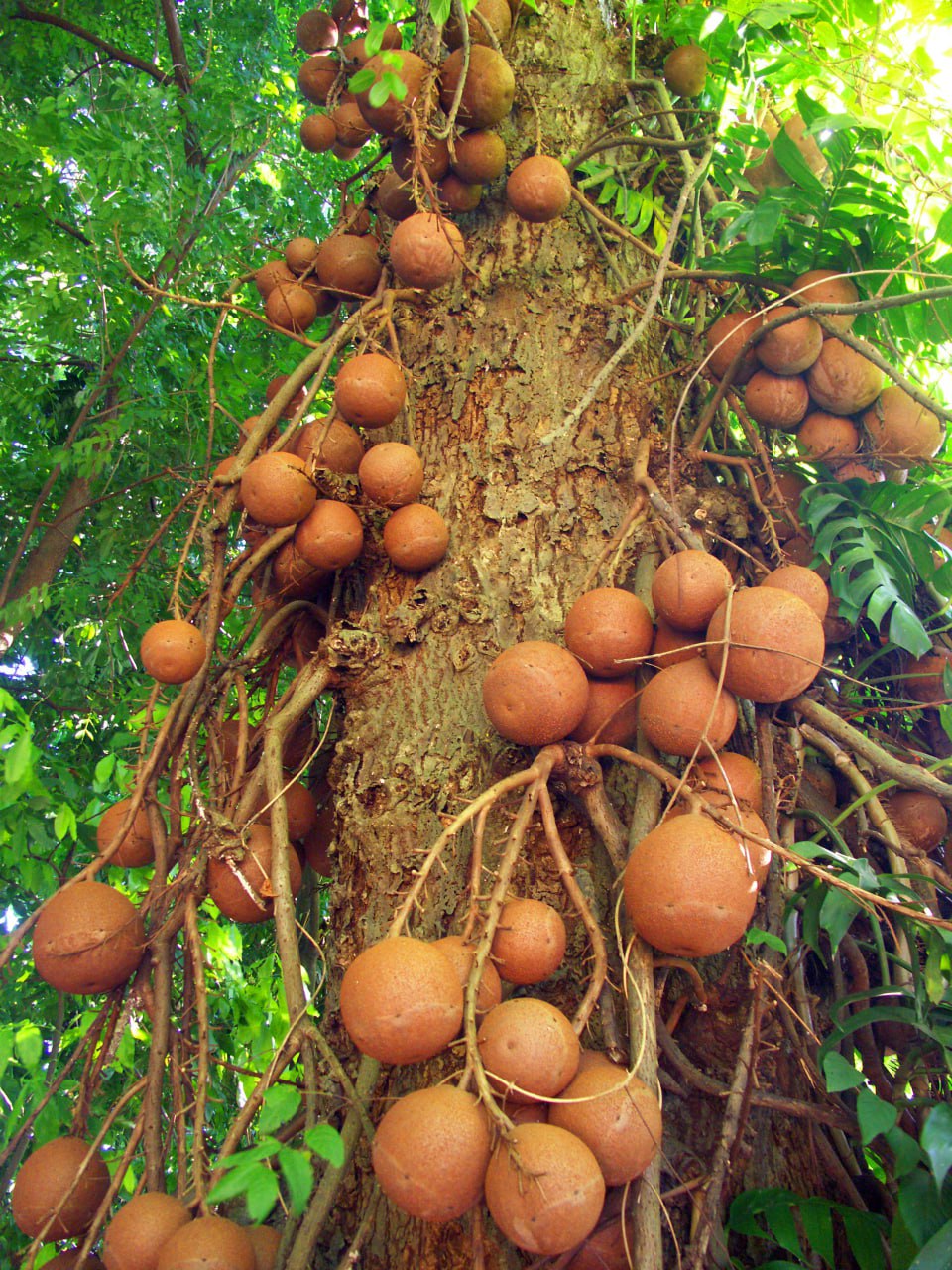
Couroupita guianensis - Cannonball Tree with fruit
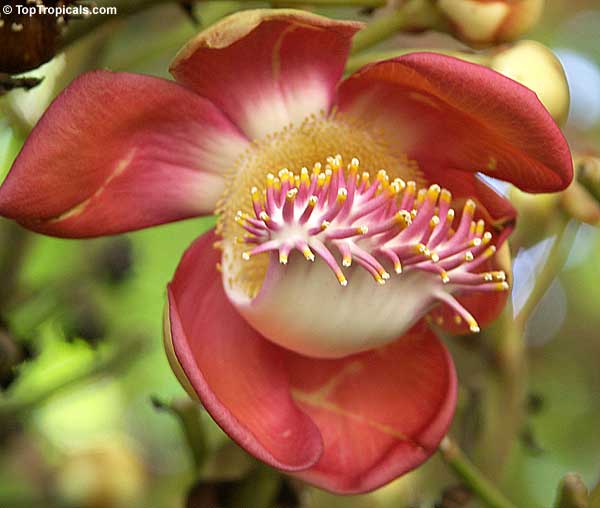
Couroupita guianensis - Cannonball Tree flower
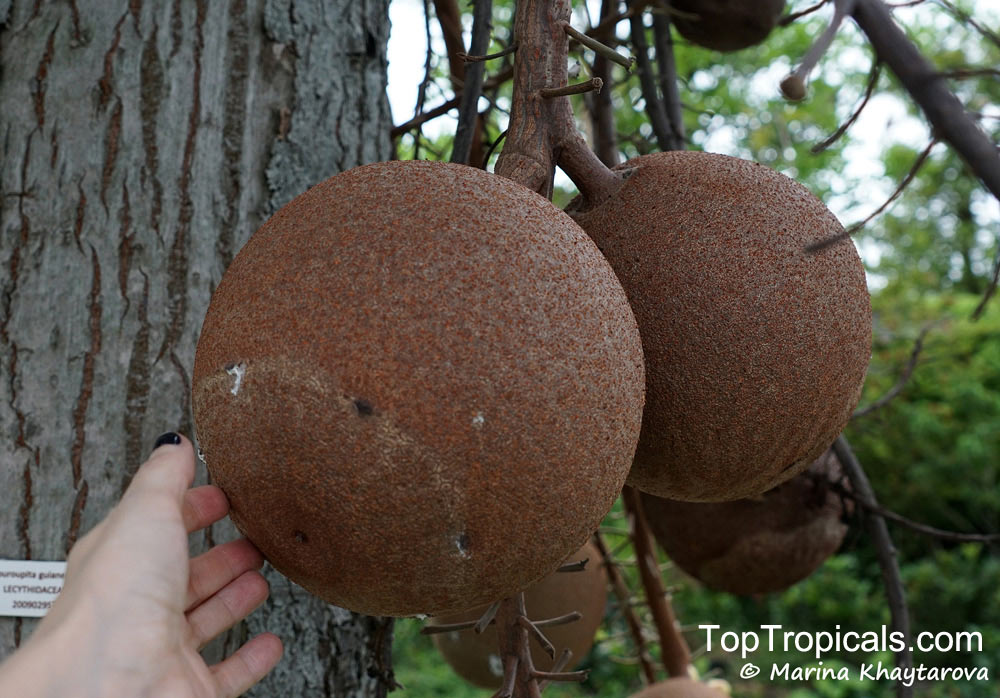
Couroupita guianensis - Cannonball Tree fruit
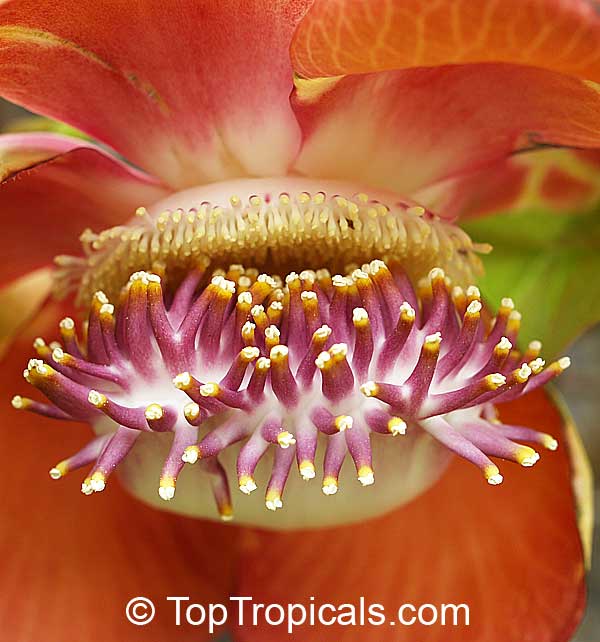
Couroupita guianensis - Cannonball Tree flower
- 🐙 Couroupita guianensis - Cannonball Tree - is a rare tree from South America with a bizarre fruit and flowers, that can be seen only in tropical botanic gardens.
- 🐙 It is a very tall tree with large, elliptical leaves
- 🐙 The pinkish-red flowers, strongly scented at night, grow directly from the trunk near the base of the crown, and not on the branches. They look like exotic mollusks! They have a complex structure with numerous stamens that resemble sea anemones or other marine life. The flower is often described as looking like an open mouth or a sea creature.
- 🐙 The tree blooms year round. Flowers are followed by large, globular fruit, up to 8 inches in diameter, resembling cannonballs, hence the name "Cannonball Tree." They remain on the tree for many months. On older trees there may be dozens of fruits and flower clusters at the same time!
- 🐙 When the ripe fruits fall from the tree, they can make a loud, cannonball-like noise upon hitting the ground due to their size and weight.
🛒 Shop rare plants
#Fun_Facts #Trees #Nature_Wonders
🏵 TopTropicals
What is this spiny Hedgehog fruit and how does it taste?
Annona montana - Mountain Soursop, Hedgehog Annona
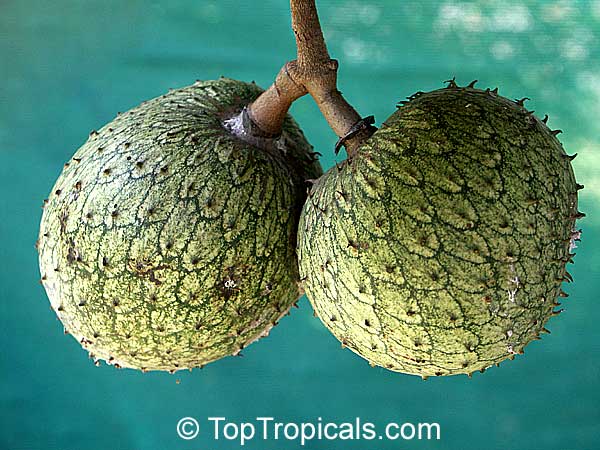
Annona montana - Mountain Soursop, Hedgehog Annona
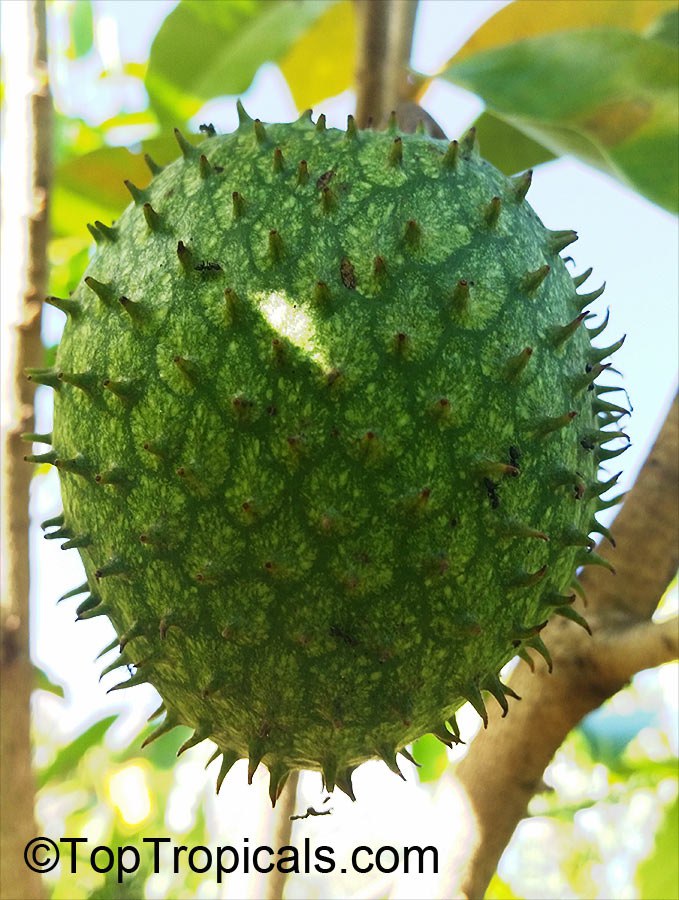
Annona montana - Mountain Soursop, Hedgehog Annona
👀 This is one of the coolest looking tropical fruit!
Annona montana - Mountain Soursop or Hedgehog Annona. It is also called Wild Custard Apple, Guanabana de Monte, or Wild Soursop.
- 📍 This fruit is prized for its deliciously sweet and tangy fruit, reminiscent of a blend between pineapple and strawberry. It tastes similar to regular Soursop (or Guanabana), with slightly milder flavor. The pulp is highly scented.
- 📍 The fruit, up to a pound, has the most unusual looks! Just look at these curious Hedgehog spines!
- 📍 The tree is medium sized, with beautiful, large, leathery dark green leaves that emit a strong aroma when crushed.
- 📍 Mountain Soursop is much more cold hardy than the Soursop, established trees can take some frost, down to 24F when full grown.
- 📍 Trees produce within just 2-3 years from seed, like many Annonas, and can happily grow and produce in a large container.
👨�👧 We guarantee that everyone who sees this fruit in your garden will ask for seeds even before they taste the fruit! And you will have lots of seeds to share because Mountain Soursop is very reliable producer with many seeds in each fruit.
🛒 Order Hedgehog Annona
📚 Learn more about Hedgehog Annona
#Food_Forest #Fun_Facts #Nature_Wonders
🏵 @TopTropicals
What is the best time to plant a tree?

Koelreuteria paniculata - Golden Rain Tree
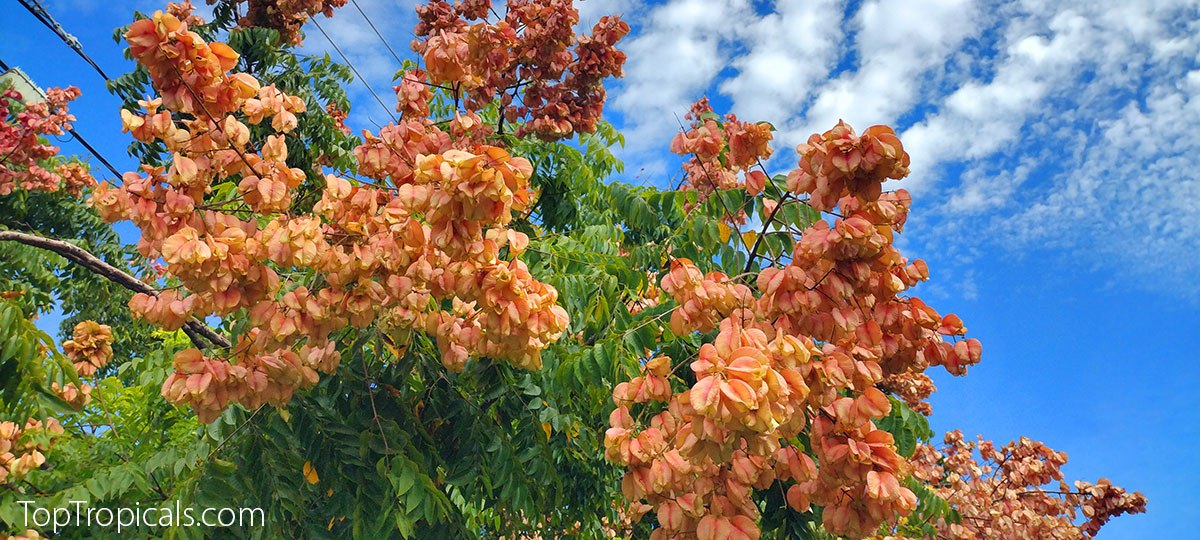
Koelreuteria paniculata - Golden Rain Tree
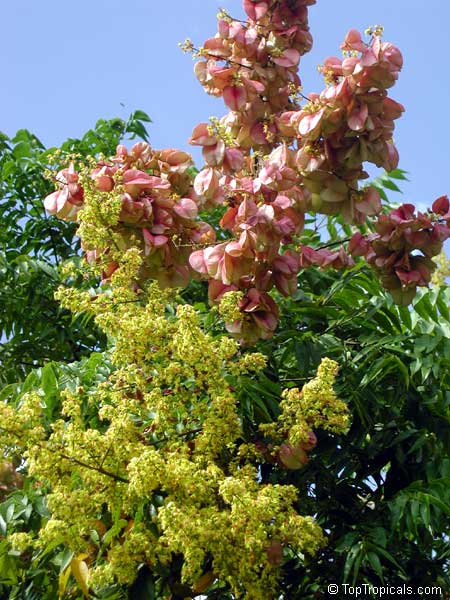
Koelreuteria paniculata - Golden Rain Tree
"The best time to plant a tree was 20 years ago. The second best time is now." - Chinese Proverb
📷 Koelreuteria paniculata - Golden Rain Tree, one of the most spectacular trees of subtopics that is actually very cold hardy and drought resistant.
- 🔰 Cascading clusters of bright yellow flowers in summer are followed by bright pink, papery, lantern-like seed pods that gracefully dangle through autumn.
- 🔰 Its elegant foliage and attractive form make it a captivating centerpiece in any garden or landscape.
- 🔰 Very fast growing, nice solution for a shade tree.
- 🔰 According to ancient Chinese manuscripts, the Golden Rain Tree is crucial for Dragons, as it is believed to be connected to their existence, guarding and complementing each other. Growing these plants is considered auspicious and is believed to safeguard the Dragon family.
2024 is a year of Dragon! 🐉
🛒 Order Golden Rain Tree
#Quotes #Fun_Facts #Trees
🏵 TopTropicals
What is the flower of the most expensive perfume?
Champaka, Joy Perfume Tree - Magnolia (Michelia) champaca
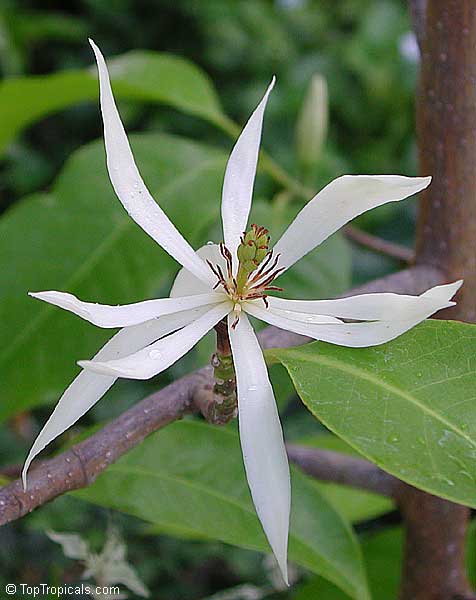
Champaka, Joy Perfume Tree - Magnolia (Michelia) champaca - white flower Alba
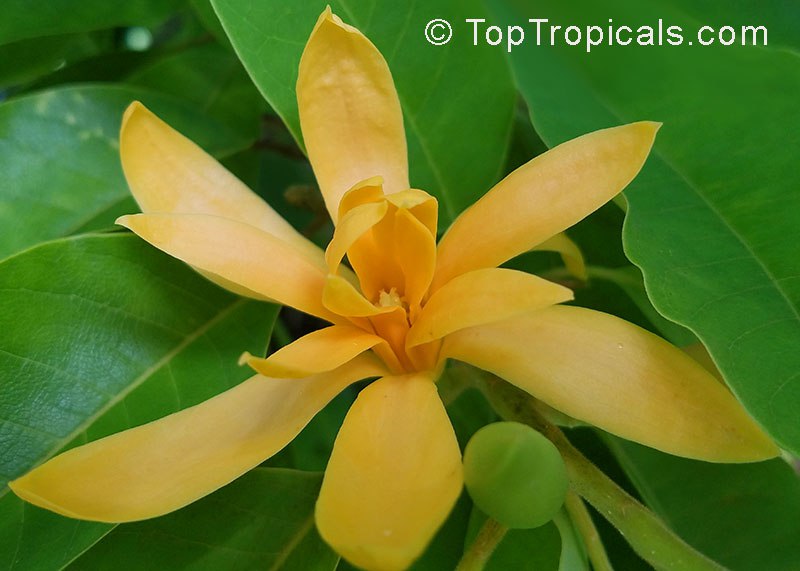
Champaka, Joy Perfume Tree - Magnolia (Michelia) champaca

Champaka, Joy Perfume Tree - Magnolia (Michelia) champaca
The flowers from this tree - Magnolia (Michelia) champaca - are used to make the world's most expensive perfume 'Joy' and smell like fruity bubble gum 🎀... you can't stop sticking your nose in this flower!
👼 Sacred tree of India and SE Asia
flowers exude a divine fragrance that is exceedingly pleasing to the Gods... and women
🌳 Perfect small landscape tree of a columnar shape. Ideal for containers.
🌡 Relatively cold hardy
💎 Rare collectible, a gem of any plant collection!
📚 Learn more about Champaka
🛒 Shop Champaka - Joy Perfume Tree
#Perfume_Plants #Fun_Facts #Container_Garden #Trees
🏵 TopTropicals
Date:
The most rewarding hardy fruit trees
Q: Recently I started working remotely and I kinda like it, no need to commute, it saves me so much time so I can have life now! My friend got me involved into growing some small houseplants but I really want to take advantage of our Florida climate and sun. I want to plant some cool fruit trees since I have a decent size yard. But I live in Florida Panhandle and we do have some occasional freeze in winter, although not for too long. But it gets very hot in summer! Are there any tropical fruit trees that will be happy here? Or should I keep everything in pots? I am excited to have my own tropical plant collection!
A: There is a perfect plant for everyone, and a perfect tree for every climate. Many tropical and especially subtropical plants can be much hardier than they are believed to be, both flowering and fruiting trees among them. You may keep the most sensitive species in pots and bring them inside for winter, while there are so many trees that will be happy in your area. Start with these that are perfect for climates with hot summers and cool winters:
1. Peaches and Plums
Low-chill, Heat-tolerant Peaches, Nectarines, Plums are especially selected for Florida hot summers. They produce well and do not require many "chill" hours like temperate fruit trees. They only need 150 chill hours and grow well in even in Arizona, so you know they are taking the heat.
2. Figs
2) Fig trees - they are easy to grow, heat- and drought- resistant trees. They are prized for their delicious fruit, which can be one to three inches in length, violet, brown or black. There are even varieties with yellow fruit. Most fruits are borne from early summer to late fall on new growth, and the fruits generally mature very quickly. These trees are sensitive to frost only when actively growing, but can withstand 10F when dormant. Read more about Fig trees.
